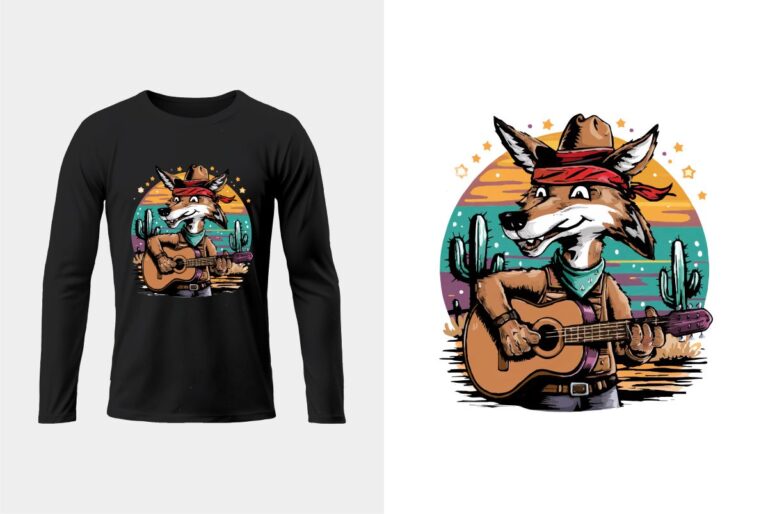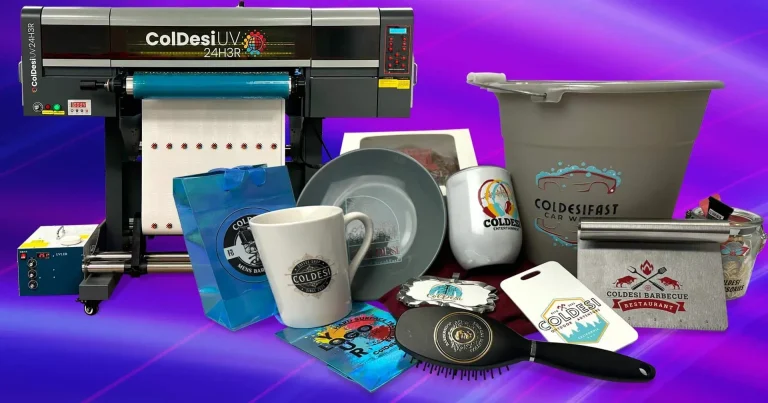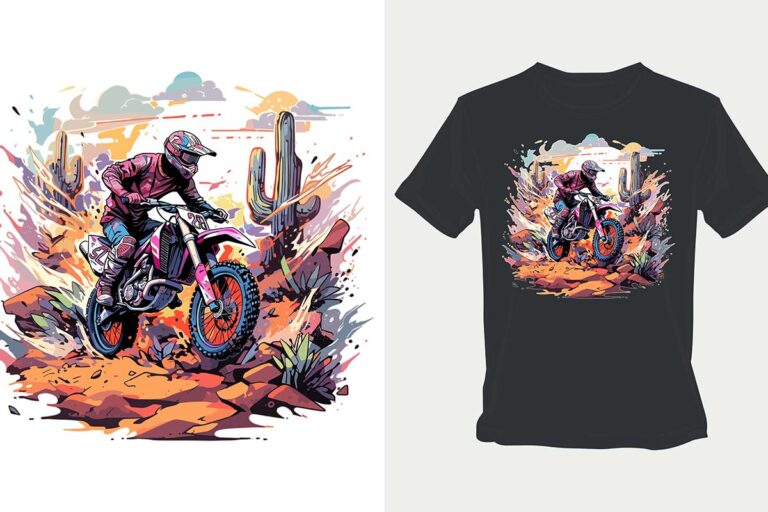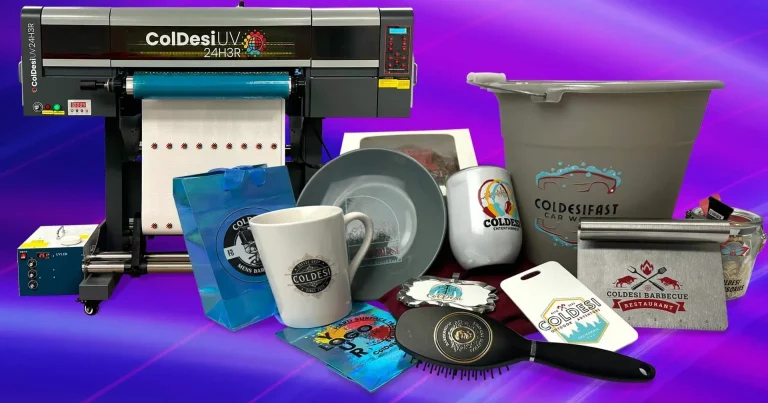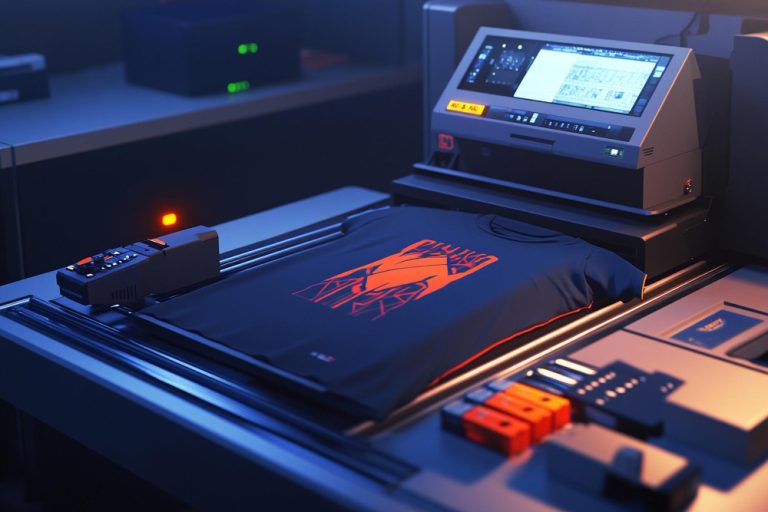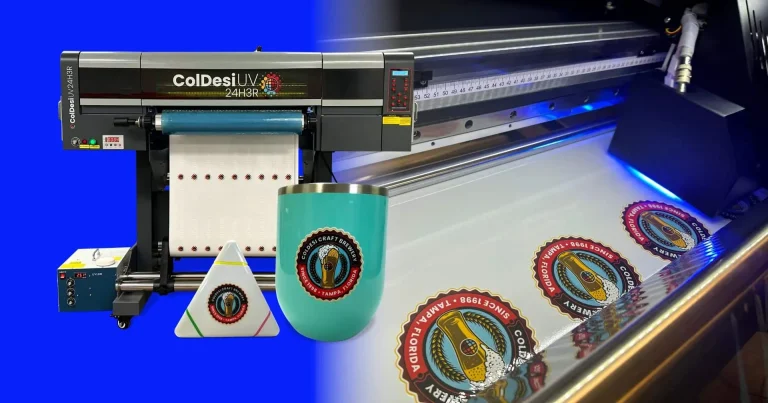UV DTF Printing: Essential Tips for Beginners Success
UV DTF printing, or Direct-to-Film printing utilizing UV technology, is revolutionizing the way designs are transferred onto a variety of substrates, from textiles to metals. This innovative method employs ultraviolet-curable inks, ensuring not only remarkable color vibrancy but also impressive durability in the final product. For beginners eager to explore this exciting field, understanding the essential UV DTF equipment and printing techniques is vital for achieving outstanding results. In this guide, we’ll provide you with crucial UV DTF printing tips to help you navigate the process efficiently while optimizing your prints for different substrates. Whether you are just starting out or looking to refine your approach, our insights will equip you with the knowledge necessary to excel in UV DTF printing.
Starting a journey in the world of UV DTF technology can seem daunting, yet it opens up myriad possibilities for both hobbyists and aspiring entrepreneurs alike. This method of direct film printing combines cutting-edge UV inks with advanced curing techniques to create stunning visual products that stand the test of time. Beginners will find that familiarizing themselves with essential UV DTF equipment is key to success, alongside understanding the nuances of the printing process. Here, we will delve into effective strategies and UV DTF printing tips to help streamline your experience and unleash your creative potential. By mastering these foundational aspects, you will be better positioned to create high-quality prints that truly shine.
Understanding the Basics of UV DTF Printing
UV DTF printing, or Direct-to-Film printing, is a transformative technology that has surged in popularity due to its exceptional ability to produce vivid designs across a plethora of materials. The core of this process involves using a special type of film featuring your desired graphic, which is then printed with UV-curable inks. The magic happens when these inks are cured using ultraviolet light, creating a resilient finish that is not only visually appealing but also remarkably resistant to everyday wear and tear. Unlike traditional printing methods, UV DTF allows for more detailed and intricate designs, making it an excellent choice for custom promotional items or unique personal gifts.
For beginners, grasping the fundamentals of UV DTF printing is crucial for maximizing output quality and efficiency. Essential terms such as substrate, ink density, and curing time should become part of your vocabulary as you start navigating this vibrant landscape. Furthermore, understanding the comparative advantages of UV DTF over conventional printing techniques will give you an edge, especially in producing high-quality projects that require durability and brilliance in color reproduction.
Essential Equipment for Optimal UV DTF Printing
To embark on your UV DTF printing venture, having the right tools at your disposal is paramount. The backbone of your operation will be a reliable UV printer, specifically designed to handle DTF applications effectively. Notable brands such as Epson and Mimaki provide options known for their precision and performance, making them invaluable assets to your printing workshop. In addition to the printer, investing in a high-quality heat press is essential as this equipment applies the right combination of heat and pressure to ensure your designs adhere perfectly to the transfer film.
Moreover, selecting the right transfer film plays a critical role in your printing success. It’s recommended to choose films that are specifically optimized for UV inks to ensure the best quality in your prints. Beginners should pay attention to the specifications and compatibility of these films with various substrates, as it may significantly affect the overall outcome of your printed products. Understand that these tools are not mere accessories; they are integral components that will influence the quality and efficiency of your UV DTF printing experience.
Preparing Your Workspace for UV DTF Printing
Preparation is a critical step in the UV DTF printing process that is often overlooked by newcomers. Begin by organizing a clean and well-ventilated workspace, as UV inks can emit fumes that require proper safety precautions. Ensure that your area is free from dust and clutter to prevent contamination, which can adversely affect your prints. Maintaining a tidy workspace not only boosts productivity but also significantly enhances the quality of your output.
Printer calibration is another key aspect of preparation that demands attention. Take time to follow the manufacturer’s guidelines meticulously to set up your printer and heat press correctly. Misalignment and inconsistent ink application are common issues that can arise from inadequate calibration, and they can lead to disappointing results. By investing time in preparing your workspace and equipment, you’ll set a solid foundation for a successful UV DTF printing journey.
Designing Compelling Graphics for UV DTF Printing
The design stage in UV DTF printing is where innovation and creativity converge. Utilizing design software such as Adobe Illustrator is highly beneficial for creating visuals that will capture attention and communicate messages effectively. For optimal results, it’s advisable to work with vector graphics since they maintain sharpness and clarity regardless of the size. This is particularly important in UV DTF, where detailed imagery can often mean the difference between a mediocre project and a stunning one.
Color management during the design phase is also crucial. Ensure your color profiles are correctly aligned with your printer settings to achieve desired hues in your prints. Conducting color tests on sample materials allows you to evaluate and refine your design before executing a full-scale print. As you navigate through this stage, remember that effective design not only enhances aesthetics but also influences the overall quality and appeal of the final product.
Each design should aim to be unique and tailored to your target audience, whether that be for customer products, promotional material, or personal gifts. Experimenting with various styles and techniques can reveal new opportunities and applications, significantly benefiting your UV DTF printing ventures.
Mastering the UV DTF Printing Process
Getting the printing process right is essential in achieving high-quality results. As a beginner, one effective way to ensure your prints come out perfectly is to perform trial runs. These preliminary prints allow you to make necessary adjustments regarding ink density and resolution. By testing out your settings before committing to a larger print run, you minimize waste and increase the chances of producing successful prints right out of the gate.
In addition to trial prints, understanding the recommended curing times for your specific inks and films is critical. Curing time plays a vital role in the final quality of your print; insufficient curing can lead to smudging, peeling, or premature wear, while excessive curing can damage both the print and the substrate. By familiarizing yourself with these specific requirements, you will ensure that each piece you produce is of the highest quality, capable of enduring the test of time.
Post-Processing: Ensuring Quality and Durability
Post-processing is an often underappreciated stage in the UV DTF printing workflow. Once your prints are completed, it is imperative to allow them ample time to cure fully. This step cannot be rushed, as complete curing significantly enhances the durability and visual appeal of your products. Inadequate curing can lead to issues such as color fading and texture degradation, which are counterproductive to the high standards you aim to achieve.
Moreover, conducting adhesion tests after printing is recommended to ascertain how well your prints will perform under everyday conditions. By utilizing methods such as abrasion tests, you can assess the longevity and robustness of your prints, helping confirm the effectiveness of your UV DTF printing process. This attention to detail will not only elevate your products but also build trust with your customers who expect quality and longevity.
Frequently Asked Questions
What is UV DTF printing and how does it work?
UV DTF printing, or Direct-to-Film printing, is a modern printing technique that uses ultraviolet (UV) light to cure ink instantly on a transfer film. This method allows for vibrant, durable prints on various materials such as textiles and plastics. The UV inks harden when exposed to UV light, resulting in high-quality images suitable for both promotional items and personalized products.
How can beginners start with UV DTF printing?
Beginners can start with UV DTF printing by investing in essential equipment like a reliable UV printer, a quality heat press, and compatible transfer films. It’s also crucial to prepare a clean workspace, calibrate the printer correctly, and practice creating designs using vector graphics and proper color management.
What essential equipment do I need for UV DTF printing?
To succeed in UV DTF printing, you need a reliable UV printer, a high-quality heat press for transferring designs, and suitable transfer films that work with UV inks. Brands like Epson and Mimaki are recommended for their trusted performance in professional settings.
What are some tips to optimize UV DTF prints?
To optimize UV DTF prints, ensure accurate printer calibration, conduct trial prints to adjust settings, and adhere to recommended curing times. Using vector graphics for design and testing color combinations on sample materials will enhance overall print quality.
What post-processing techniques are important for UV DTF printing?
Post-processing is critical in UV DTF printing. Make sure to allow complete curing of your prints to enhance durability. Conduct adhesion tests to confirm that your prints withstand daily wear and tear, ensuring the final product’s quality meets customer expectations.
Where can I find more tips for UV DTF printing best practices?
For more tips on UV DTF printing best practices, join online communities, forums, and tutorials that focus on printing techniques. Engaging with others in the industry can provide valuable insights and resources, aiding your continuous learning process.
| Key Points | Details |
|---|---|
| Introduction to UV DTF Printing | UV DTF printing produces high-quality images on various substrates using UV-curable inks that ensure durability. |
| Understanding the Process | Involves using a transfer film with UV inks, which cure instantly under UV light, enhancing color vibrancy and detail. |
| Essential Equipment | Key components include a UV printer, heat press machine, and high-quality transfer films. |
| Preparation and Setup | Ensure a clean workspace and properly calibrate the printer and heat press according to manufacturer guidelines. |
| Designing Your Prints | Use vector graphics and manage color profiles effectively to achieve stunning visuals. |
| The Printing Process | Conduct trial prints and understand curing times to enhance output quality. |
| Post-Processing Techniques | Allow prints to cure completely and perform adhesion tests to ensure durability. |
| Continuous Learning | Engage with communities and tutorials to continuously improve your UV DTF printing skills. |
Summary
UV DTF printing is an innovative technology that allows for the creation of vibrant, high-quality prints on various materials. As you embark on your UV DTF printing journey, it’s essential to grasp the fundamentals of the process, including the right equipment and effective techniques. By preparing your workspace, calibrating your machines, and refining your designs, you’ll be well-equipped to produce exceptional results. Remember, continuous learning and practice can help you discover unique applications in the ever-evolving printing market. Stay updated with the latest trends, and don’t hesitate to leverage community resources to enhance your skills.


